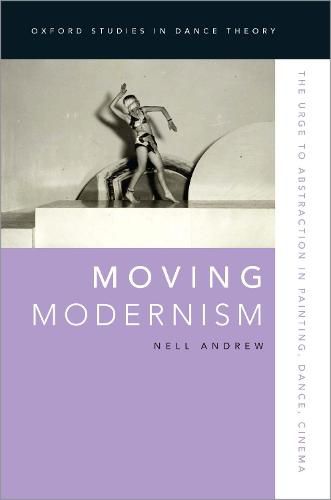Readings Newsletter
Become a Readings Member to make your shopping experience even easier.
Sign in or sign up for free!
You’re not far away from qualifying for FREE standard shipping within Australia
You’ve qualified for FREE standard shipping within Australia
The cart is loading…






In early twentieth-century Europe, the watershed developments of pictorial abstraction, modern dance, and cinema coincided to shift the artistic landscape and the future of modern art. In Moving Modernism, Nell Andrew challenges assumptions about modernist abstraction and its appearance in the field of painting. By recovering performances, methods, and circles of aesthetic influence for avant-garde dance pioneers and filmmakers from the turn of the century to the interwar period DL including dancer Loie Fuller, who presented to symbolist artists the possibility of prolonged or suspended vision; Valentine de Saint-Point, whose radical dance paralleled the abstractions of cubo-futurist painting; Sophie Taeuber and her Dada dance; the Belgian pure plastics choreographer known as Akarova; and the dance-like cinema of Germaine Dulac DL Andrew demonstrates that abstraction was deployed not only as modernist form but as an apparatus of creation, perception, and reception across artistic media.
$9.00 standard shipping within Australia
FREE standard shipping within Australia for orders over $100.00
Express & International shipping calculated at checkout
In early twentieth-century Europe, the watershed developments of pictorial abstraction, modern dance, and cinema coincided to shift the artistic landscape and the future of modern art. In Moving Modernism, Nell Andrew challenges assumptions about modernist abstraction and its appearance in the field of painting. By recovering performances, methods, and circles of aesthetic influence for avant-garde dance pioneers and filmmakers from the turn of the century to the interwar period DL including dancer Loie Fuller, who presented to symbolist artists the possibility of prolonged or suspended vision; Valentine de Saint-Point, whose radical dance paralleled the abstractions of cubo-futurist painting; Sophie Taeuber and her Dada dance; the Belgian pure plastics choreographer known as Akarova; and the dance-like cinema of Germaine Dulac DL Andrew demonstrates that abstraction was deployed not only as modernist form but as an apparatus of creation, perception, and reception across artistic media.